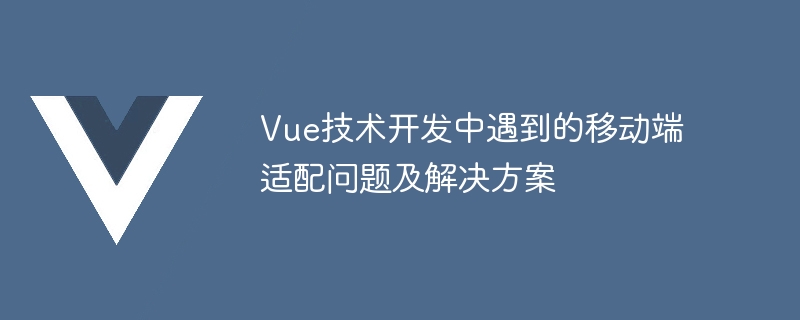所属分类:web前端开发

Vue 技术开发中遇到的移动端适配问题及解决方案
前言:
随着移动设备的普及和互联网应用的迅速发展,开发移动端应用已成为开发人员不可忽视的一部分。在实际开发过程中,移动端的屏幕尺寸、分辨率等差异会给前端开发人员带来一些适配的问题。本文将重点介绍在 Vue 技术开发中常见的移动端适配问题及相应的解决方案,并结合具体的代码示例进行说明。
一、移动端适配问题:
二、解决方案与代码示例:
<style>
.container {
width: 100%;
height: 100%;
font-size: 16px;
}
.box {
width: 10rem;
height: 10rem;
background-color: #ccc;
margin: 0 auto;
}
</style>
<div class="container">
<div class="box"></div>
</div>在上述代码中,通过设置根元素的字体大小为 16px,并以此为基准设置元素的大小,可以实现相对于屏幕尺寸的适配。
import Vue from 'vue'
import VueRouter from 'vue-router'
Vue.use(VueRouter)
const routes = [
{ path: '/mobile', component: MobileComponent },
{ path: '/tablet', component: TabletComponent },
{ path: '/desktop', component: DesktopComponent }
]
const router = new VueRouter({
routes
})
new Vue({
router
}).$mount('#app')在上述代码中,根据不同的屏幕尺寸配置了三个不同的路由路径和组件,通过路由的切换即可加载不同的组件,实现页面的响应式布局。
<style>
.image {
background-image: url('image.jpg');
width: 100%;
padding-bottom: 75%;
}
@media screen and (min-width: 768px) {
.image {
background-image: url('image-large.jpg');
padding-bottom: 50%;
}
}
</style>
<div class="image"></div>在上述代码中,通过使用媒体查询,根据不同的屏幕宽度加载不同分辨率的图片,在不同分辨率的设备上显示不同的图片。
结语:
在 Vue 技术开发中,移动端适配是一个重要的问题。本文介绍了移动端适配问题的解决方案,并结合具体的代码示例进行说明。希望本文能够对开发人员在实际项目中解决移动端适配问题提供一些参考和帮助。